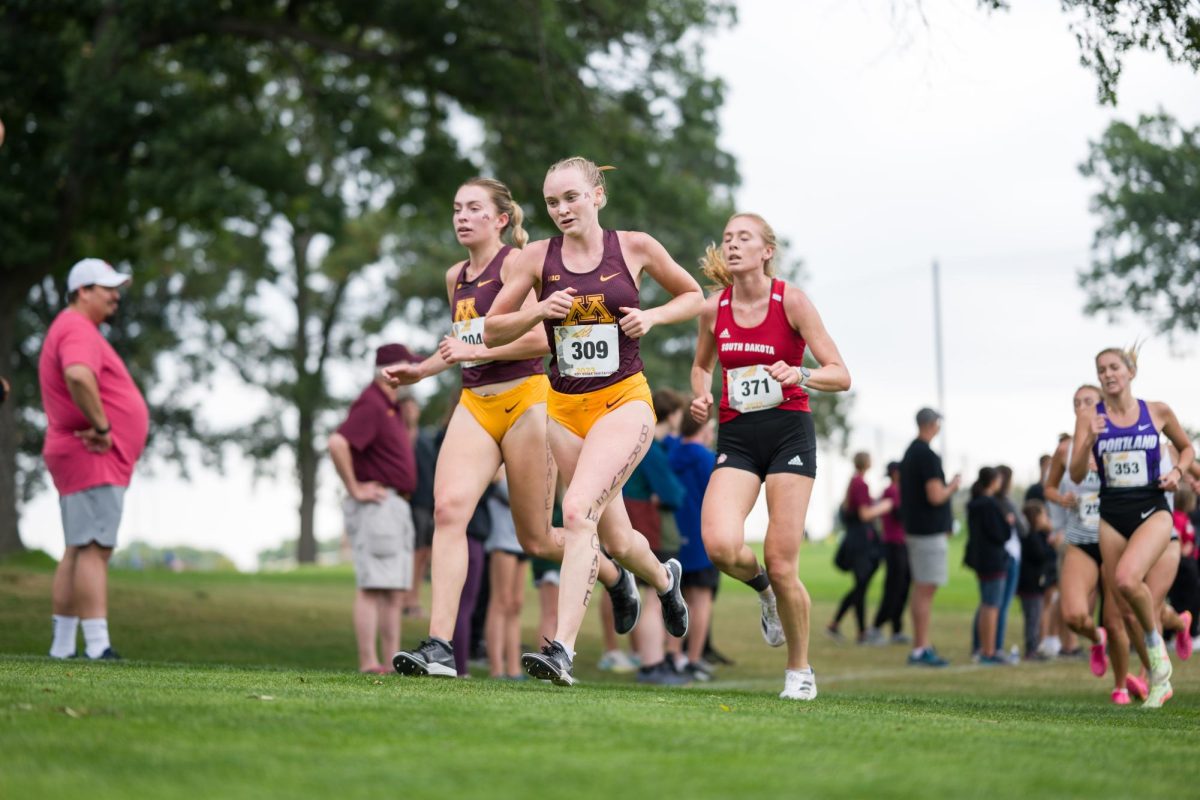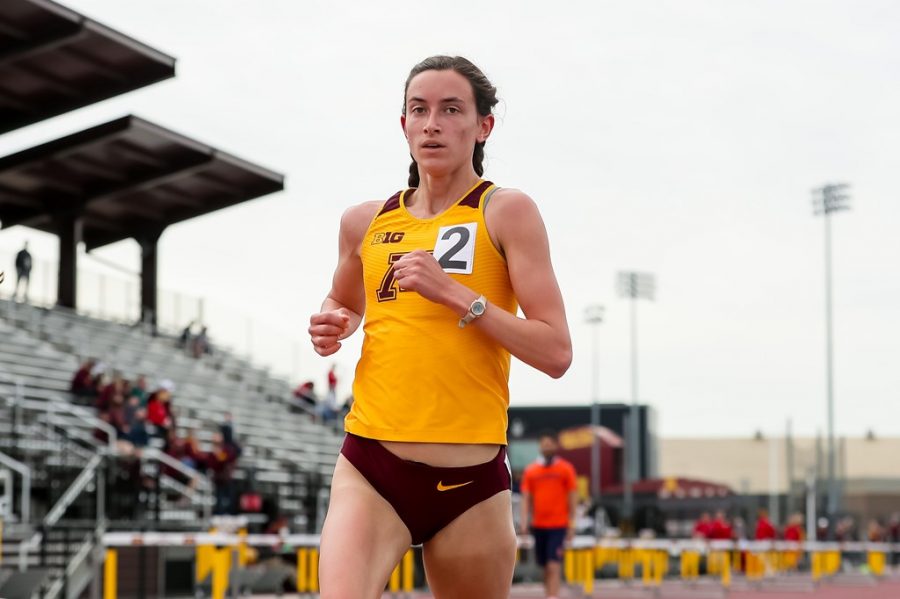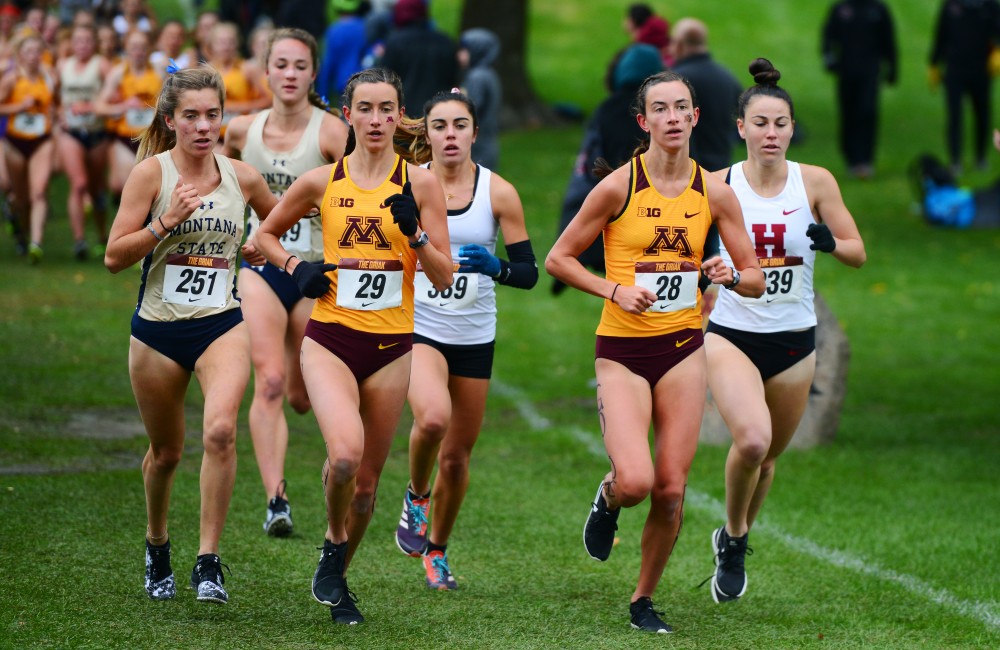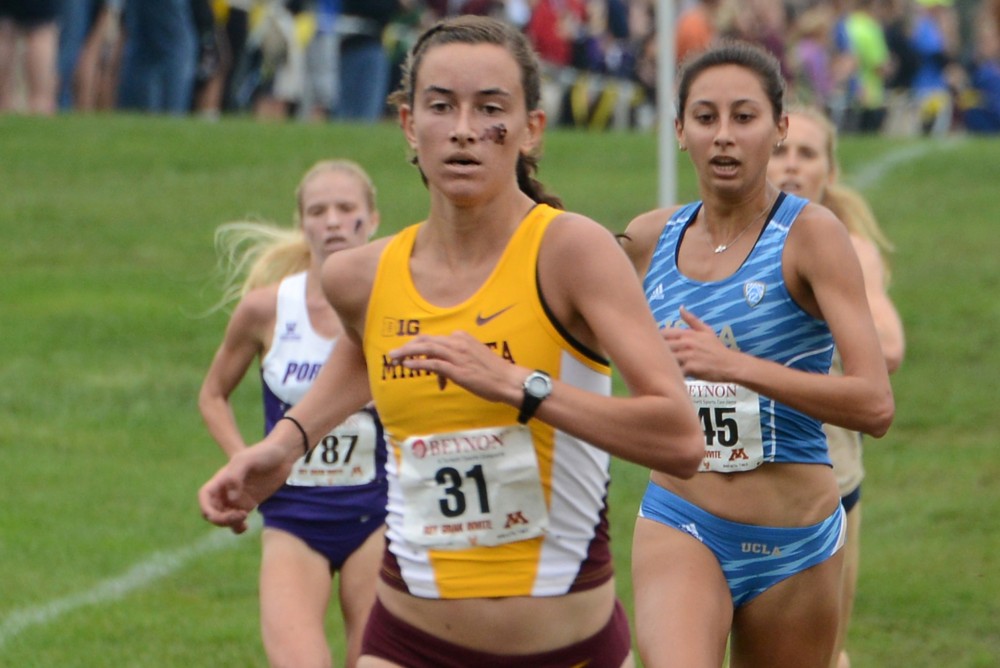After a long day of training, redshirt sophomore Riley Macon journeyed to Sanford’s dining hall last Friday evening, where he proceeded to eat three plates of food, a salad and a bowl of cereal.
The Gophers typically run between 60 and 85 miles a week, senior captain Blayne Dulian said, and because of that, eating mass amounts of food is necessary to refuel their bodies.
Dulian said he averages 3,500 calories per day.
“Some of these college athletes are going over 100 miles a week,” head coach Steve Plasencia said. “We try to have guys in that 85- to 90-mile-a-week range, which is still a lot. And because of that, the appetites are so big. Mealtime is a beautiful time when you’re running that much.”
And for the runners, the competition isn’t just on the course.
During the offseason, those who are courageous enough participate in the “cereal challenge.”
“There are 12 types of cereal … so you have to get a bowl of each and fill them up with milk and put them all down,” Macon said.
Macon was one of the competition’s few participants. He attempted and completed the challenge.
Finishing the last few of the dozen bowls was the hardest, he said.
“You try and save the most flavorful ones for the end because it’s more enjoyable to eat,” Macon said. “But when it’s that sugary, it messes with you a bit.”
Plasencia said when throwers, who are notorious for eating a lot, sit down with runners for meals, they are stunned by runners’ caloric intake.
“[The throwers will] sit down with this distance runner who will be going fork-for-fork with them,” he said.
Plasencia has had his fair share of the “eat-and-run combo,” in which he ate large amounts to keep up with his activity.
He competed in the 10,000-meter race at the 1988 and 1992 Olympic Games in Seoul, South Korea, and Barcelona, Spain. He had to make sure his caloric intake was up to par with what his body demanded.
On top of just food, Plasencia said runners on the team are making sure they get the nutrition they need by drinking protein shakes.
“I have some of the guys [who] get done with their run, and they have a bottle sitting right there,” Plasencia said. “And they [drink] that thing down before five minutes is up to kind of get that replacement going right away.”
To be the most successful, a runner and his or her body must have a symbiotic relationship. And to do that, the “eat-and-run combo” must be very present in everyday life.
Runners have to think about the types of food they eat, but also the amount of food they consume.
“I think that would be surprising to people how much these guys eat,” Plasencia said.
















